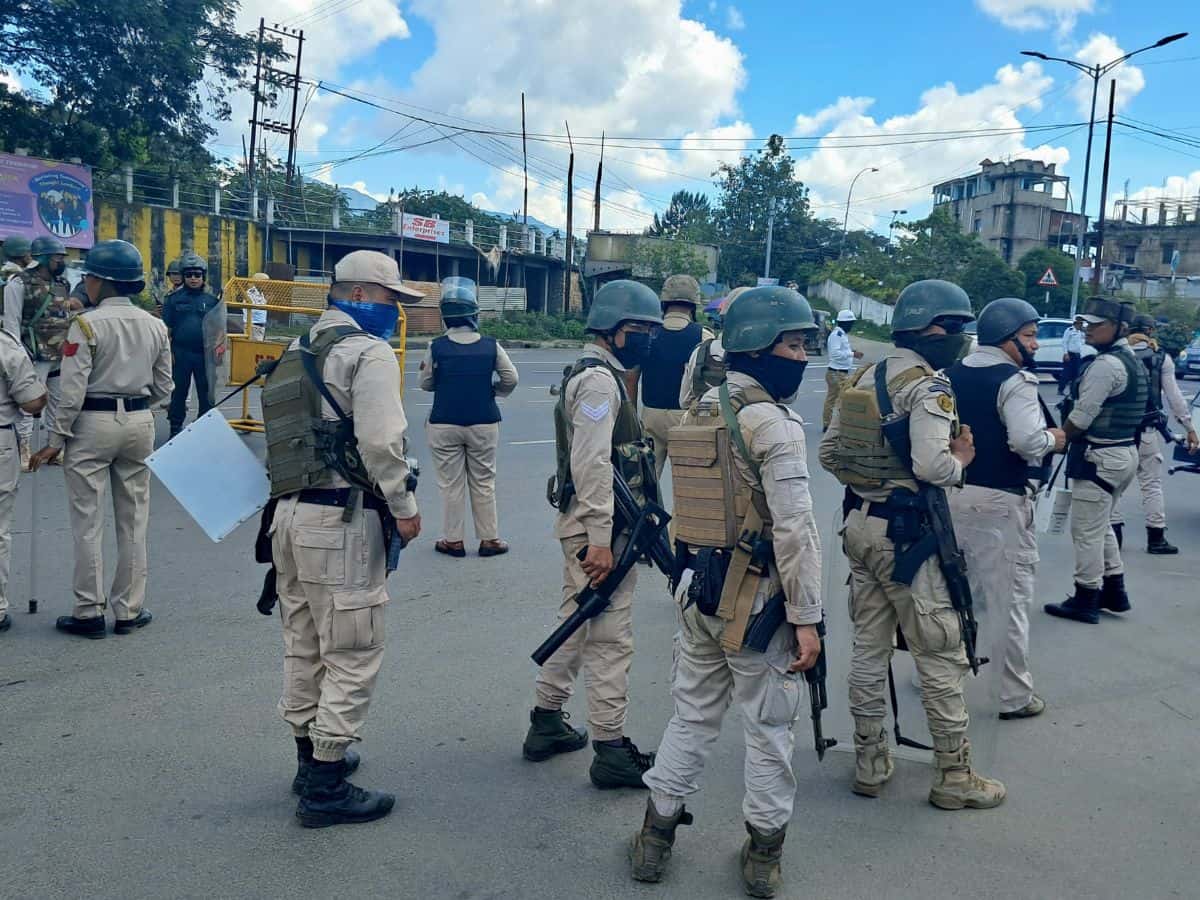
Imphal: A mob tried to attack Chief Minister N Biren Singh’s empty ancestral house on Thursday night, despite a security clampdown and curfew in the Imphal valley where protestors have been holding violent demonstrations after photos of bodies of two youths missing since July surfaced on social media earlier this week.
Security forces, however, were successful in foiling the attempt and stopping them 100-150 metres from the residence after firing several rounds of tear gas shells.
The chief minister lives in a separate, well-guarded official residence in the centre of the state’s capital.
Amid reports that militants have been seen moving around openly and instigating mobs in Imphal valley, Srinagar Senior Superintendent of Police Rakesh Balwal, who has expertise in handling terror-related cases, has been “prematurely” brought back to Manipur.
The 2012 batch IPS officer will be assigned a new posting in Manipur upon his joining the state.
About the attack on the chief minister’s ancestral residence, a police officer said, “Two groups of people came from different directions and approached the house but they were stopped around 100-150 metres away from it.”
The authorities switched off the electricity connection in the entire area to help reduce the visibility of the protestors. More barricades were added to the previous ones near the house, while the protestors also burnt tyres in the middle of the nearby road.
Ambulances were seen advancing near the spot but till now there is no report of injury to any side.
The incident occurred after a mob vandalised the deputy commissioner’s office in Imphal West district and torched two four-wheelers in the early hours of Thursday.
Curfew was re-imposed in the two districts — Imphal East and West on Wednesday as the security forces combatted the violent protests, which saw 65 demonstrators being injured since Tuesday.
The Manipur government on Thursday constituted a committee to verify complaints of alleged use of excessive force on protesters, mainly students, by security forces here over the last two days, an official order said.
“A meeting of senior officers of CAPF was held to discuss the present law and order situation in the state. The officers were apprised of the unfortunate injuries of students as well as security personnel,” the state police said on X.
The forces discussed on using minimum force in dealing with the public, especially students.
Appealing to the students to cooperate with law enforcement agencies in maintaining peace and bringing normalcy back early, the police said, “Any miscreants taking advantage of the current situation will be firmly dealt with by police.”
A fresh bout of violence broke out in the state capital on Tuesday, a day after photos of the bodies of two youths – a man and a girl – who went missing in July went viral on social media.
A CBI team is currently investigating the killing in the northeastern state which has been witnessing ethnic strife for nearly five months.
More than 20 MLAs of Manipur, currently camping in Delhi, have urged the Centre to take action against those behind the kidnapping and killing of two youths in the restive state.
The legislators have also urged Union Home Minister Amit Shah to ensure that the CBI probe is expedited.
In view of the law and order situation, the Manipur government on Tuesday reimposed the ban on internet services for the next five days.
More than 180 people have been killed and several hundred injured since ethnic violence broke out in Manipur on May 3, when a ‘Tribal Solidarity March’ was organised in the hill districts to protest against the majority Meitei community’s demand for Scheduled Tribe status.
Meiteis account for about 53 per cent of Manipur’s population and live mostly in the Imphal valley, while tribals, including Nagas and Kukis, constitute 40 per cent and reside mostly in the hill districts.



